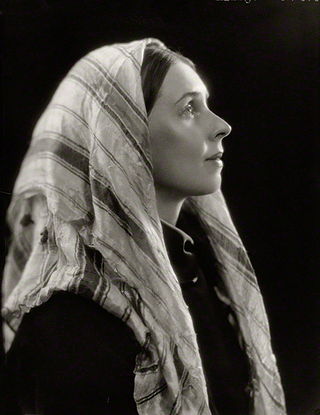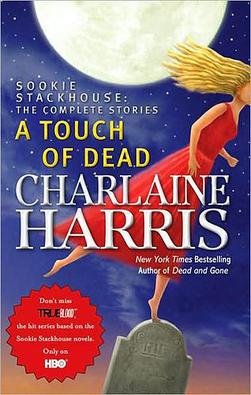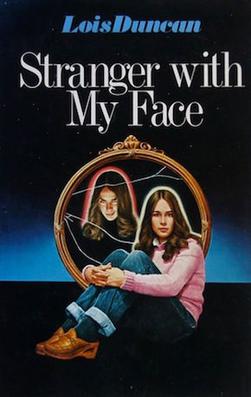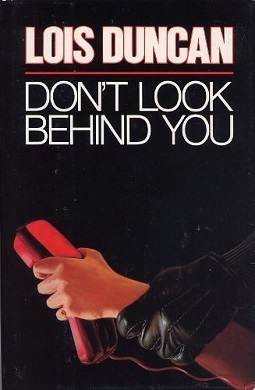
Clairvoyance is the claimed psychic ability to gain information about an object, person, location, or physical event through extrasensory perception. Any person who is claimed to have such ability is said to be a clairvoyant.
Extrasensory perception (ESP) also known as the sixth sense, is a paranormal ability about receiving information not gained through the recognized physical senses, but sensed with the mind. It is claimed to be more sophisticated than intuition and the knowledge obtained is usually received from dreams, astral projection, or psychic abilities.
You Can't Take It with You is a comedic play in three acts by George S. Kaufman and Moss Hart. The original production of the play premiered on Broadway in 1936, and played for 838 performances.

The Faraway Tree is a series of popular novels for children by British author Enid Blyton. The titles in the series are The Enchanted Wood (1939), The Magic Faraway Tree (1943), The Folk of the Faraway Tree (1946) and Up the Faraway Tree (1951).

Killing Mr. Griffin is a 1978 suspense novel by Lois Duncan about a group of teenaged students at a New Mexico high school, who plan to kidnap their strict English teacher, Mr. Griffin. Duncan developed the story from the character of Mark, who is involved in the kidnapping plan and is based on the first boyfriend of Duncan's oldest daughter. Mr. Griffin was based on the personality of a teacher one of Duncan's daughters had in high school. In 2010, the novel was reissued with changes to modernize the content, making it more age appropriate and appealing to readers.

Lydia Lopokova, Baroness Keynes was a Russian ballerina famous during the early 20th century.

Milbourne Christopher was a prominent American illusionist, magic historian, and author.

Solitaire is a fictional character in the James Bond novel and film Live and Let Die. In the film, she was portrayed by Jane Seymour.

Lois Duncan Steinmetz, known as Lois Duncan, was an American writer, novelist, poet, and journalist. She is best known for her young-adult novels, and has been credited by historians as a pioneering figure in the development of young-adult fiction, particularly in the genres of horror, thriller, and suspense.

Locked in Time is a 1985 suspense novel by Lois Duncan. The story centers around Nore, a seventeen-year-old girl who moves into a new home with her father and her new stepfamily. Soon after she meets her stepmother, stepbrother, and stepsister for the first time, Nore begins to suspect something is not quite right about her stepfamily. The author states that the novel explores some of the issues surrounding having eternal life. Duncan says she developed the idea for the novel when one of her daughters was thirteen years old and was having issues with her body image. Duncan mentions that her daughter was "taking everything out" on her, and she began to wonder what it would be like if her daughter never outgrew her adolescence.

Lois Lenore Lenski Covey was a Newbery Medal-winning author and illustrator of picture books and children's literature. Beginning in 1927 with her first books, Skipping Village and Jack Horner's Pie: A Book of Nursery Rhymes, Lenski published 98 books, including several posthumously. Her work includes children's picture books and illustrated chapter books, songbooks, poetry, short stories, her 1972 autobiography, Journey into Childhood, and essays about books and children's literature. Her best-known bodies of work include the "Mr. Small" series of picture books (1934–62); her "Historical" series of novels, including the Newbery Honor-winning titles Phebe Fairchild: Her Book (1936) and Indian Captive: The Story of Mary Jemison (1941); and her "Regional" series, including Newbery Medal-winning Strawberry Girl (1945) and Children's Book Award-winning Judy's Journey (1947).

Katharine Holabird is an American writer, best known as the author of the Angelina Ballerina series, illustrated by Helen Craig, and the Twinkle series, illustrated by Sharon Williams.

Down a Dark Hall is a 1974 young adult gothic novel by Lois Duncan. The book follows Kit Gordy, who is sent to a boarding school where only four students are admitted including herself. The students suddenly develop new talents, with Kit waking up one night playing a musical piece she has never heard. After they are told that they have been channeling the spirits of talented historical figures, Kit tries to escape the school before the bond between the spirits and the students becomes permanent.

I Know What You Did Last Summer is a 1973 suspense novel for young adults by Lois Duncan. A film adaptation loosely based on the novel was released in 1997.

A Touch of Dead is a collection of short stories from Charlaine Harris's series The Southern Vampire Mysteries. This title was released on October 6, 2009. This book only contains the short stories Harris has published in which Sookie Stackhouse is present.

Stranger with My Face is a young adult horror novel by Lois Duncan, first published in 1981. The novel is about Laurie Stratton, who is seen by others in places she knows she could not be. She discovers that she has an identical sister named Lia who has been visiting her town using astral projection, which involves sending her soul outside her body. Laurie learns astral projection and uses it to look for her sister. During this time, Lia's spirit takes control of Laurie's body. The story describes Laurie's struggle to take back control of her body. The novel explores themes of appearance versus true self and the idea of a double, someone similar but not quite the same as someone else. Duncan got the idea for the book after hearing about the concept of astral projection, which she thought would make a great plot for a novel. In 2011, the novel was updated with text to modernize the content.
Tara Duncan is an animated television series co-produced by MoonScoop Group and DQ Entertainment, with the participation of M6 and Disney Channel, very loosely based on the novel series. The show premiered on 27 June 2010 in France on Disney XD, and aired through 19 June 2011 but was cancelled after its twenty-sixth episode, much to the disappointment of fans. A computer-animated show started airing in August 2022, which follows the book series more.

Don't Look Behind You is a 1989 young adult thriller novel by Lois Duncan. It won a number of regional awards and was adapted into a television film in 1999.

Extrasensory Perception is a 1934 book written by parapsychologist Joseph Banks Rhine, which discusses his research work at Duke University. Extrasensory perception is the ability to acquire information shielded from the senses, and the book was "of such a scope and of such promise as to revolutionize psychical research and to make its title literally a household phrase".

Angelina Ballerina is a British animated preschool children's television series, based on the Angelina Ballerina series of children's books by author Katharine Holabird and illustrator Helen Craig. The series is about Angelina Mouseling, a young mouse who loves dancing ballet, her family, and her classmates. Finty Williams performed the voice of Angelina, and Judi Dench performed the voice of Miss Lilly.

















